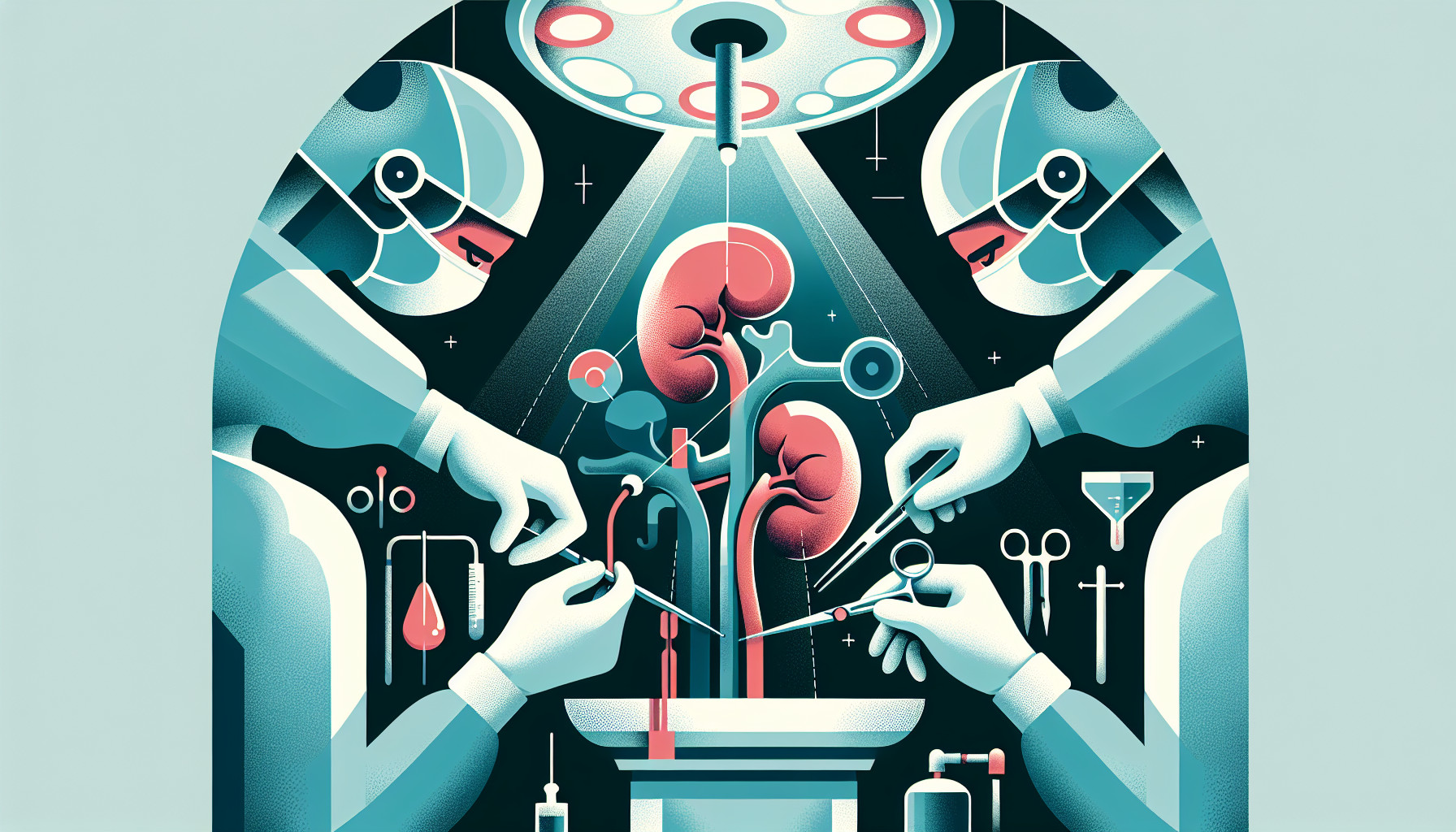Our Summary
This research paper is about a study comparing two surgical techniques used for kidney donation: the laparoscopic intraperitoneal approach and the retroperitoneoscopic approach. The study was a review of other studies (a meta-analysis) that involved examining literature published between 1994 and 2013. They found that the retroperitoneoscopic approach seemed to have fewer complications, such as lower blood transfusion rate, fewer delays in the kidney starting to function in its new host, fewer blood vessel injuries, and less need to switch to a more traditional open surgery. However, the study also found that there was a lot of variation across the different studies they reviewed, suggesting that the way these surgeries are reported needs to be more consistent. The researchers concluded that more research is needed to confirm these findings and to establish a standard approach to minimize complications in kidney donations.
FAQs
- What are the two surgical techniques compared in this study for kidney donation?
- What were the findings of the study regarding the retroperitoneoscopic approach?
- What did the researchers conclude about the variations across different studies and the need for further research?
Doctor’s Tip
One helpful tip a doctor might give a patient about laparoscopic nephrectomy is to follow all pre-operative instructions, such as fasting before the surgery and stopping certain medications as directed. Additionally, it is important to communicate any concerns or questions with your healthcare team before the procedure. After the surgery, following post-operative care instructions, such as taking prescribed medications and attending follow-up appointments, is crucial for a successful recovery.
Suitable For
Patients who are typically recommended for laparoscopic nephrectomy are those who are in need of a kidney transplant, either due to end-stage renal disease or other kidney-related conditions. These patients may have a living donor willing to donate a kidney, and the laparoscopic approach is considered a minimally invasive option for kidney donation surgery. Additionally, patients who are younger, healthier, and have a lower body mass index may be good candidates for this type of surgery, as they may have faster recovery times and fewer complications. Ultimately, the decision to undergo laparoscopic nephrectomy should be made in consultation with a healthcare provider who can evaluate the individual patient’s specific medical history and needs.
Timeline
Before laparoscopic nephrectomy:
- Patient undergoes a series of tests and evaluations to determine if they are a suitable candidate for kidney donation
- Patient meets with their healthcare team to discuss the risks and benefits of the procedure
- Surgery date is scheduled and patient receives preoperative instructions
- Patient may need to stop taking certain medications and follow a specific diet in preparation for surgery
During laparoscopic nephrectomy:
- Patient is placed under general anesthesia
- Surgeon makes small incisions in the abdomen to insert a laparoscope and other surgical instruments
- Kidney is carefully dissected and removed through one of the incisions
- Surgery typically lasts 2-3 hours
After laparoscopic nephrectomy:
- Patient is taken to a recovery area and monitored closely for any complications
- Pain medication is provided to manage postoperative pain
- Patient is encouraged to walk and resume normal activities as soon as possible to aid in recovery
- Follow-up appointments are scheduled to monitor healing and kidney function
Overall, laparoscopic nephrectomy is associated with a shorter hospital stay, faster recovery time, and less postoperative pain compared to traditional open surgery. However, it is important for patients to follow their healthcare team’s instructions and attend all follow-up appointments to ensure a successful recovery.
What to Ask Your Doctor
- What are the potential risks and complications associated with laparoscopic nephrectomy?
- How does the laparoscopic intraperitoneal approach compare to the retroperitoneoscopic approach in terms of outcomes and recovery time?
- What is the success rate of laparoscopic nephrectomy for kidney donation?
- How long is the recovery period after laparoscopic nephrectomy and what can I expect during this time?
- Are there any specific criteria or considerations that make me a better candidate for one approach over the other?
- What is the experience of the surgical team with laparoscopic nephrectomy procedures?
- What post-operative care and follow-up will be needed after the surgery?
- How does laparoscopic nephrectomy compare to traditional open surgery in terms of outcomes and recovery?
- Are there any lifestyle changes or restrictions I need to be aware of after undergoing laparoscopic nephrectomy?
- Can you provide me with information or resources to learn more about laparoscopic nephrectomy and kidney donation?
Reference
Authors: He B, Bremner A, Han Y, Hamdorf JM. Journal: Exp Clin Transplant. 2016 Apr;14(2):129-38. PMID: 27015530
